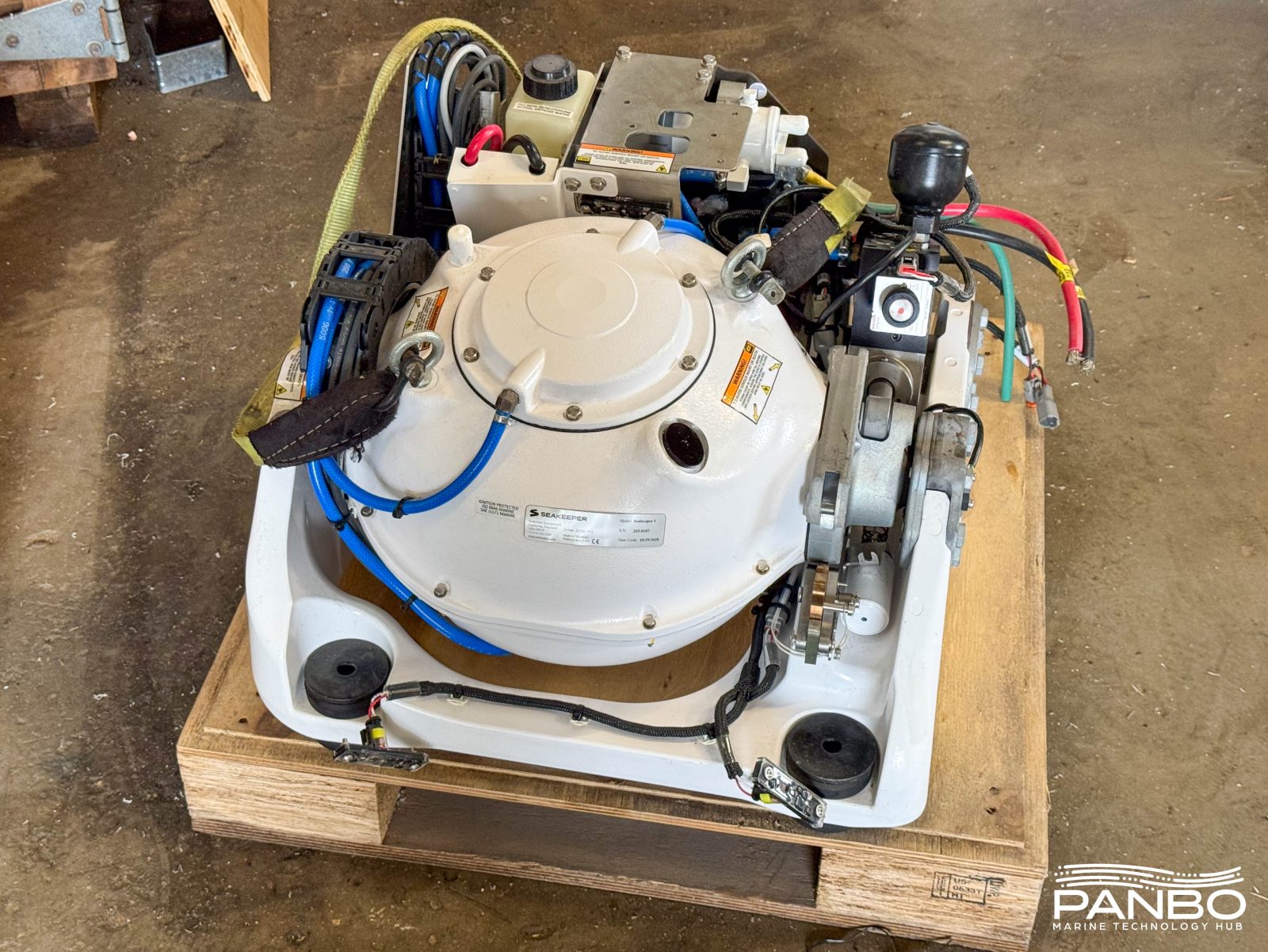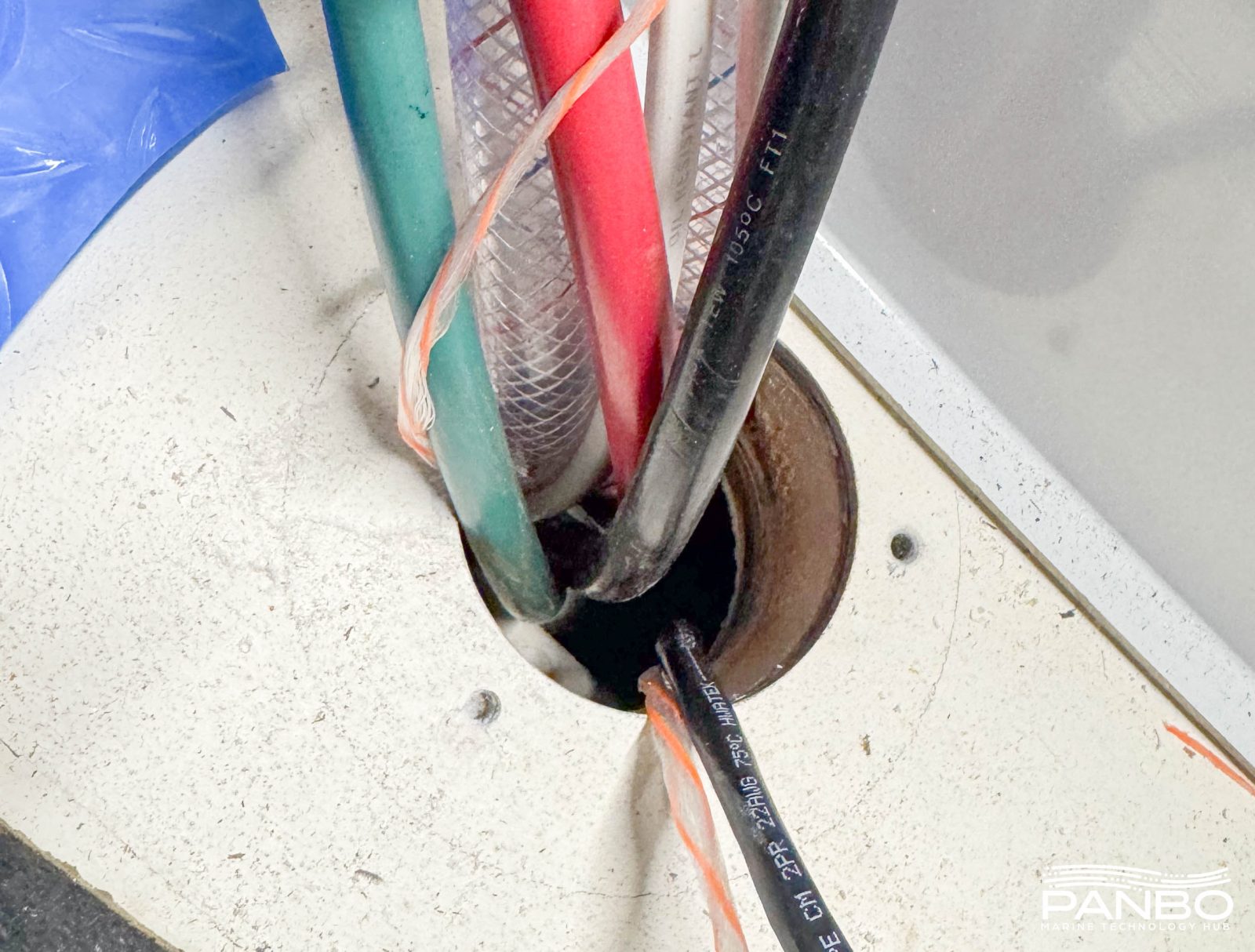Panbo(at) gets more stable: Seakeeper 1 install in progress

It’s been over six years since I got involved with Ben Ellison and Panbo. When I first started working with Ben E. timelines were one of my biggest struggles. I figured, the longer I do this, the better I’ll get at pacing things out, knowing how long a review and article will take, and scheduling things. Well, six-plus years later, I’m no better. In fact, my current project, the installation and on-boat testing of a Seakeeper 1, might be the longest in the making of any I’ve done.
The idea for this article started at the Miami Boat Show in February of 2020 where Seakeeper unveiled the 1. I helped judge the Innovation Awards at the show where the 1 won the mechanical and electrical systems category. We felt the engineering enabling mounting the gyro to the deck without a protrusion or cutting the deck below deserved recognition. In fact, as long as the deck of the boat meets Seakeeper’s requirements, the entire unit is glued directly to the deck.

After the show, I had a conversation with Dan Harding, editor-in-chief of Power and Motoryacht, about what a cool story it would be to cover, and participate in, an install from start to finish. So, we pitched the idea to Seakeeper who was interested and willing to participate. They also put us in touch with Tri Sea Stabilizers. Tri Sea is a Seakeeper exclusive dealer with an impressive trophy case of honors from Seakeeper.
Things came together quickly and Seakeeper allocated a unit for the project and we were off to the races. Well, off to the races until a global pandemic shut everything down, including our little project.
Fast forward a bit and we entered the biggest boom period recreational boating has seen in a very long time. That boom included tremendous demand for Tri Sea’s services and meant that this project was tough to schedule. Tri Sea’s limited availability paired with trying to align with my schedule and PMY’s pushed this project out and out. This fall, we finally got it scheduled and now the installation is nearing completion.
Installation begins

Last week I drove Panbo(at) from Fort Myers about 110 miles up to Tri Sea’s Tampa location, one of four they maintain. Installation is a multistep process. The very first part of the process was verifying the deck is robust enough to support the stabilizer glued directly to it. Fortunately, Cobia builds a stout boat and the deck is plenty strong. So, now work is underway and should be completed soon.
The video shows the process of spreading the adhesive out, laying down the plate, and then setting the gyro on the plate. Once the glue cures, the gyro will be bolted to the plate and the rest of the installation can be completed. When I watched the video, two things caught my eye: first, I look like a dead-beat sitting on the gunnel videoing while the installer does all the work and second, when sped up, even video stabilized with a gimbal is jerky. Sorry about that.

The hole you see above caught my eye during the installation process. When you’re gluing a 365-pound stabilizer to the deck, it’s reassuring to see a deck structure as robust as what the picture above shows. The deck is probably around two inches thick with stout fiberglass sandwiching composite core and reinforcing materials.
More to come
Later this week, after some nasty weather moves out, I will go sea trial the boat and then bring it home. Once it’s home I’ll Panbo(at) through its paces and see just what both Seakeeper’s Ride and 1 can do to ensure stability at all speeds in all conditions. I expect the two systems will work well together. Gyros work best at rest and low speed while Ride requiress speed to get water moving across the system’s controllers. It should make for a very stable boat!













Hey Ben, thanks for keeping this updated. From my understanding, the Seakeeper (up until SK6 I believe) requires a 12v power supply which doesn’t really feel inline with more modern systems. Do you have an idea if they are going to be increasing their input voltage range beyond just 12v? Thanks!
Kevin,
I believe the Seakeeper 1, 2, 3, and 4 are all DC powered units. Indeed, as you mention, they are designed to run on 12 volts. The 1 is designed for boats 23-30 feet, the 2 for boats 30-36 feet, the 3 for boats 35-41 and the 4 for 38-44 foot boats. Many if not most of these boats will be powered by outboards. To date, with the exception of Mercury’s dual voltage alternator, nearly every outboard made has a 12-volt alternator. So, I think sticking with 12-volts makes sense for now. I do suspect that may change at some point in the future, but I also think that point is probably 3-5 years away at least.
-Ben S.